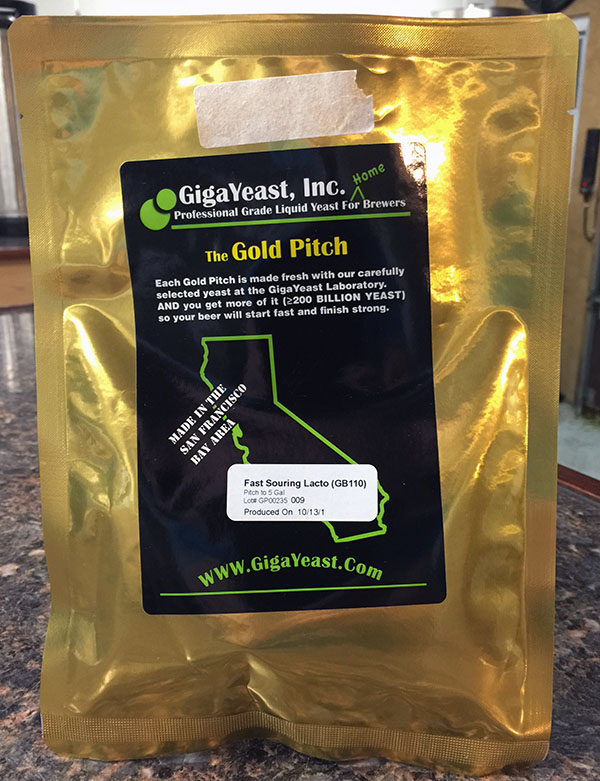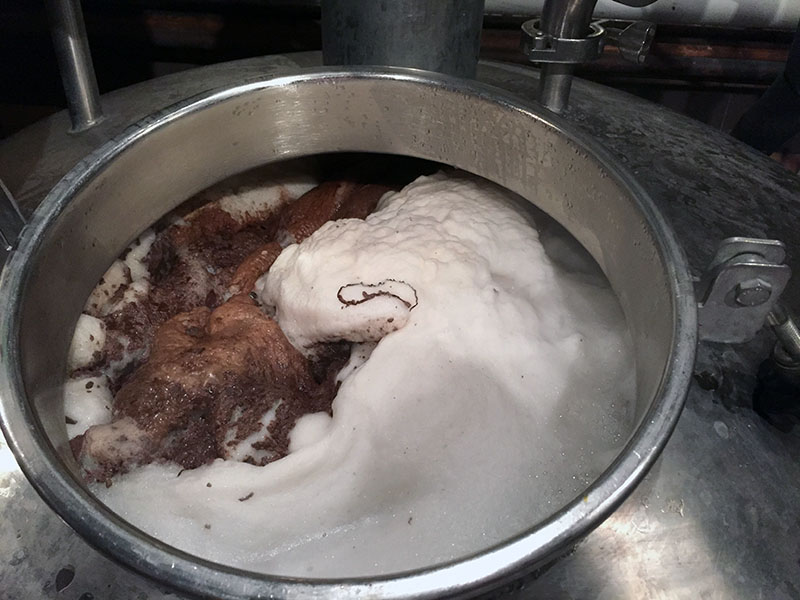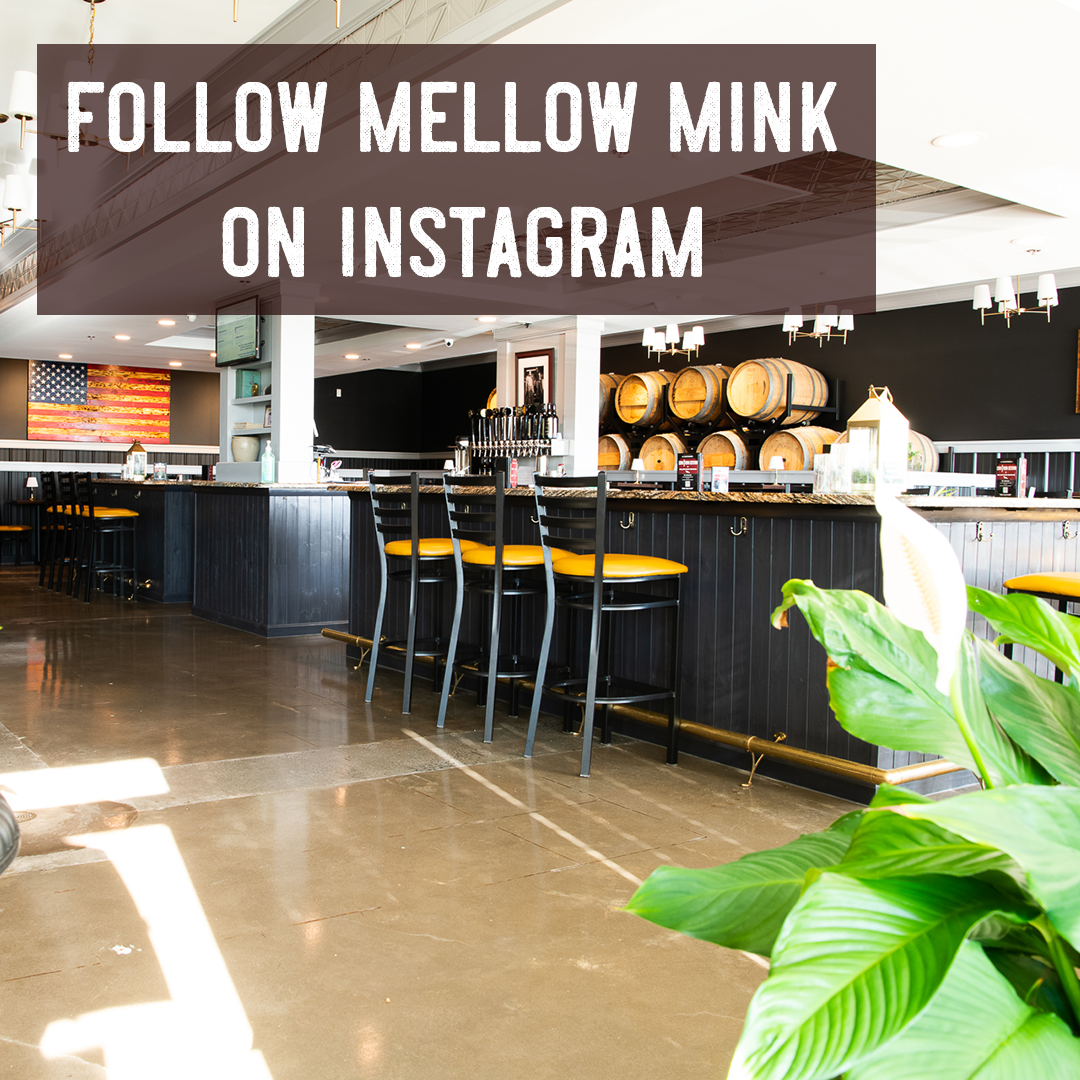Howdy Sour Beer Fans!
It’s been awhile since your pal Sour Brew has posted an article. This is because I went and did a dumb thing… I got an internship at a local brewery. I’m excited to say that after three months I haven’t quit and still love to brew, so I think I may have found a new career. Also after being there for only a short time, I was able to design and brew my own beer, and better yet it was the brewery’s first sour beer! After much discussion with the head brewer, I convinced him to let me brew a Gose. In the course of this article, I hope to give you a little insight into how to brew one of these puppies using the same process I used.
Here is a quick overview of the style from the German Beer Institute:
Gose is an ancient, sour and saline tasting ale, made from more than half malted wheat and the rest malted barley. The brew is fermented with both yeast and lactic bacteria and is spiced with both coriander and hops. It is brewed with slightly salted water. This peculiar beer style is now most closely associated with Leipzig, the capital of the German State of Saxony.
 So when I’m thinking about brewing a gose, there are a few key things I look for. First and foremost, don’t get crazy with the salt! You are trying to achieve a slight salinity that will play nicely with lactic acid and coriander. Westbrook Brewing Company’s Gose is a prime example of how to blend that sour and saltiness, with a nice dose of coriander for a citrus kick. Another excellent example is Anderson Valley Highway 128 The Kimmie, The Yink, and the Holy Gose. They too merry that subtle salt with a tart lactic acid that gives way to a slight malt backbone of toasted crackers, something to keep in mind. Those are the key things to take away, not too salty, fair amount of coriander and a nice acidity. Also these are sessionable beers, no need for an 8% monster.
So when I’m thinking about brewing a gose, there are a few key things I look for. First and foremost, don’t get crazy with the salt! You are trying to achieve a slight salinity that will play nicely with lactic acid and coriander. Westbrook Brewing Company’s Gose is a prime example of how to blend that sour and saltiness, with a nice dose of coriander for a citrus kick. Another excellent example is Anderson Valley Highway 128 The Kimmie, The Yink, and the Holy Gose. They too merry that subtle salt with a tart lactic acid that gives way to a slight malt backbone of toasted crackers, something to keep in mind. Those are the key things to take away, not too salty, fair amount of coriander and a nice acidity. Also these are sessionable beers, no need for an 8% monster.
I will go over two methods that can be employed by both commercial brewers and home brewers alike. But before we tackle any of that, let’s take a look at a sample recipe. This is the recipe I used when brewed our example “Gose Hunter” at Bube’s Brewery in Mount Joy, PA. Classic Gose recipes are not particularly complex, and I went with a super simple version with an American twist.
As you can see we used a pretty simple grist, as it should be (traditionally the Germans used only pilsner and wheat malt) No need for any crystal or other specialty malts in this recipe, but I would suggest that you mix it up and try pilsner malt as opposed to just pale malt. A mix of the two would lend another dimension in malt complexity and work very well. I opted for American Pale Malt to work with what my brewery had on hand as well as to change it up a bit from a strictly traditional recipe.
The process used to sour this beer was a little challenging to engineer on a larger scale than my home-brewed sour beers, but in the end it produced the same great results. This beer was soured using a sour-kettle method. We mashed in using a single step infusion at 148° F and held the temperature there for one hour, then proceeding to mash out at 168° F for 15 minutes via direct steam heating of the mash tun. At the beginning of the sparge, we used hot water until the kettle volume was half way full, then switching to a cold water sparge to help lower the temperature of the wort in the kettle before pitching. Now I must caution you that if using a cold sparge method, you may want to adjust your recipe a little for the poor efficiently you will get during the cold water portion of the sparge.
Once the kettle reached a temperature of 120° F, I both pitched four packages of Fast Souring Lactobacillus from Giga Yeast and added a sack containing 5 pounds of acid malt into the kettle. I should mention that this temperature worked out for us, but generally you want to be below 115° F when pitching your Lactobacillus cultures.
After inoculation, I closed all open ports on the kettle, sealed the whole thing as best as I could, and then proceeded to purge the kettle with carbon dioxide. I believe this is the most important step in the sour kettle method. Carbon dioxide is heavier than oxygen, and layering the kettle with it will help ensure that there is an anaerobic environment to prevent any micro flora from fermenting and producing off-flavors. The two most common issues I’ve seen in Gose (and in the closely related style Berliner Weisse) are huge doses of isovaleric and butyric acid that are produced by unwanted aerobic fermentations. Isovaleric acid has a taste and smell associated with Parmesan cheese or stinky feet, while Butyric acid has a distinct smell and taste of bile and vomit.
After three days, the pH shot down to 3.6 and that is the point at which we boiled the wort for 90 minutes, locking in the acidity at that level. The boil was finished out with the hop, coriander and salt additions mentioned above. We cooled down to 64° F and pitched a rehydrated brick of Safale US-05. I let the batch ferment for 5 days then racked to a bright tank to clear up and carbonate.
When home brewing, I would do everything the same except, instead of sparging into a kettle, I would use a clean and sanitized cornelius keg. Try to keep the temperature of the wort between 100-115° F. When the appropriate volume is reached, cap the keg, open the pressure relief valve, and pump CO2 into the “line out” fitting to blow out any oxygen that is in both the beer and the keg. This will ensure a great anaerobic environment and help to stave off the nasties that will leave you with cheesy bile, instead of a bright clean sour beer with a hint of salt and coriander.
After a few days in the keg, you can check the pH to see where it has fallen by use of a pH meter or even the test strips at you local home brew shop.
A word of caution… Two things I would like to stress here are:
- Do not dip your pH test strips or meter directly into the full batch of beer or wort.
- Do not consume wort before full fermentation by Saccharomyces or Brettanomyces. Wort cannot be guaranteed to be free of organisms that could produce food poisoning until both the pH has dropped below 4.5 and the alcohol content has risen to above 2% ABV (as a general rule).
Once you are content with the pH of the wort just simply boil it and hop as desired.
These steps, along with your usual cleaning and sanitizing process, will help to ensure that your beer develops a clean sour flavor and doesn’t require any extra equipment for home brewers who already keg their beers. Along with cleaning and sanitization, the use of an anaerobic fermentation environment is a must to ensure a great sour profile without isovaleric or butyric acid off-flavors. Also if you want to experiment, I would suggest using some grain in a sack, as opposed to a pure culture of Lactobacillus. This will give you more diversity in the flavor profile you are building in your beer.
I hope this has been a helpful starting point for brewers looking to produce a Gose. As always, please feel free to contact me at cale@sourbeerblog.com with any and all brewing questions you may have, sour or not!
Cheers!
Cale “Sour Brew” Baker
Update 02-10-2015:
After a few questions and more research on this method of sour kettling I’d like to make a few update to this article.
- I make a comment about use the acid malt as a way to introduce wild cultures of Lactobacillus. While that step could possibly yield good results, which was the case with Gose Hunter, I would not do this again for fear of producing off-flavors from unwanted bacteria. Sticking with a pure culture for kettle souring is strongly recommended to ensure that no off-flavors are produced.
- I recommend the use of food grade lactic or phosphoric acid to adjust the pH down to 4.5 before kettle souring. Again, this is to help stave off unwanted bacteria during the hot souring phase. You could use acid malt to achieve a lower pH, but I worry about introducing unwanted bacteria or yeast.
- The last recommendation that I would like to pass on is to keep your temperature above 112° F to prevent the creation of butyric acid (vomit, rancid milk/cheese) from Clostridium.
References:
“Gose.” Gose. The German Beer Institute, n.d. Web. 10 Dec. 2014. <http://www.germanbeerinstitute.com/Gose.html>.









